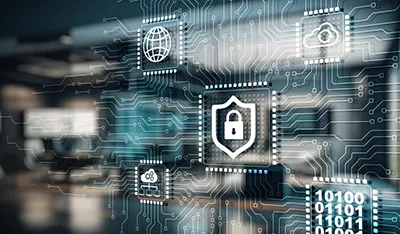Why Data Destruction is a Crucial Element of Comprehensive Cyber Security
Why Data Destruction is a Crucial Element of Comprehensive Cyber Security
Blog Article
The Relevance of Effective Information Destruction Practices in Shielding Sensitive Details and Ensuring Computer System Safety
In an age where information violations are increasingly typical, the relevance of effective data damage techniques can not be overstated. Organizations face significant dangers when sensitive info is improperly gotten rid of, possibly bring about unauthorized access and severe financial consequences. Carrying out durable information devastation approaches not just mitigates these risks however likewise lines up with lawful conformity needs, ensuring that organizations copyright their credibility and foster client count on. The inquiry stays: what details approaches can be used to improve these methods, and exactly how can organizations efficiently integrate them right into their total cybersecurity framework?
Comprehending Information Destruction
Understanding information devastation is critical in today's digital landscape, where delicate information can conveniently be endangered. Effective information destruction entails not merely erasing files yet guaranteeing that data is irretrievable via extensive approaches. This process is essential for organizations that take care of private customer info, intellectual home, or inner files, as any kind of breach can cause extreme monetary and reputational effects.
Data damage incorporates various methods, including shredding physical media, degaussing magnetic storage space devices, and using software-based solutions that overwrite data several times. Each approach serves a details purpose and should straighten with the sensitivity of the details being gotten rid of. Physical destruction is commonly favored for hard drives including extremely confidential data, while software methods might suffice for less delicate details.
In addition, sticking to sector requirements and guidelines, such as the General Information Security Regulation (GDPR) or the Wellness Insurance Portability and Accountability Act (HIPAA), is crucial for compliance and to reduce legal threats. Organizations must establish a robust information damage plan, train workers on best techniques, and routinely audit their treatments to make sure that all sensitive details is disposed of firmly and properly.
Dangers of Inadequate Practices
Insufficient information destruction techniques subject organizations to substantial dangers that can have significant consequences. When delicate info is not appropriately gotten rid of, it remains at risk to unapproved gain access to, which can lead to information breaches and identification burglary. Such cases not just compromise the security of people however also tarnish the company's online reputation, causing a loss of consumer depend on and prospective monetary effects.
Additionally, regulative compliance is increasingly stringent in several markets. Failure to stick to data damage policies can lead to hefty fines and lawful actions versus companies. These penalties can divert and stress monetary sources interest from core business procedures.
On top of that, the abuse of recurring data can cause copyright theft or business espionage, jeopardizing affordable benefits (data destruction). The impact of inadequate data destruction extends past prompt economic losses; it can also result in long-lasting damage to brand integrity and market placement

Organizations must acknowledge that data protection is not entirely regarding avoiding breaches; it likewise includes the accountable administration of data throughout its lifecycle. Disregarding reliable information destruction methods can have devastating ramifications, highlighting the requirement for robust steps to reduce these risks.
Best Practices for Data Devastation
Carrying out reliable information damage practices is important for securing sensitive information and maintaining conformity with regulatory standards. Organizations should take on a multi-faceted strategy to make certain that information is irretrievable, thus stopping unauthorized access and possible violations.
First, data should be classified based upon level of sensitivity, enabling organizations to use suitable destruction methods tailored to the level of danger. For electronic data, making use of software-based data-wiping tools that follow sector requirements can efficiently overwrite existing data. Physical damage methods, such as shredding or degaussing, are crucial for tools that keep delicate details, making certain complete obliteration.
Establishing a clear information retention policy is vital, outlining how much time various kinds of information should be retained before destruction. Normal audits of data storage space systems are also essential to determine outdated or unnecessary data needing removal.
Moreover, training staff members on the relevance of information damage and the details protocols to adhere to fosters a culture of security within the company. Keeping documents of data destruction processes gives accountability and sustains conformity with inner plans and external policies. By sticking to these best methods, companies can dramatically mitigate the risks related to data exposure.
Legal and Conformity Factors To Consider

Failure to abide with these policies can cause severe charges, consisting of substantial penalties and reputational damages. Organizations must carry out a durable data damage plan that straightens with these lawful structures and provides clear standards on the appropriate approaches of information disposal, whether physical shredding or electronic cleaning.
Furthermore, preserving documents of information destruction tasks is important for demonstrating conformity throughout audits or inspections. By prioritizing legal and compliance factors to consider, organizations can improve their information protection posture and foster count on with stakeholders and clients, weblink eventually adding to an extra safe and secure data management atmosphere.
Benefits of Effective Data Damage
Efficient data damage methods prolong beyond simple conformity; they supply significant advantages to companies that prioritize them. By making sure that delicate details is irretrievably damaged, companies alleviate the danger of information breaches and the prospective economic effects related to them. This aggressive technique not just safeguards against unauthorized access but also boosts the total dependability of the organization in the eyes of clients and stakeholders.
Implementing durable information damage techniques, such as physical damage of storage tools or innovative information wiping strategies, adds to the conditioning of an organization's cybersecurity position. data destruction. It reduces the possibility of copyright burglary and secures proprietary information, thereby maintaining an one-upmanship on the market

Conclusion
To conclude, reliable information destruction practices are necessary for guarding sensitive information and improving general computer security. By carrying out thorough methods such as degaussing, software program, and shredding overwriting, companies can mitigate the dangers related to unapproved accessibility and data breaches. Adherence to regulative requirements, including GDPR and HIPAA, additional strengthens compliance and protects against legal effects. Inevitably, a dedication to durable information damage methods promotes a culture of obligation, thus strengthening an organization's cybersecurity posture and keeping client trust.

Report this page